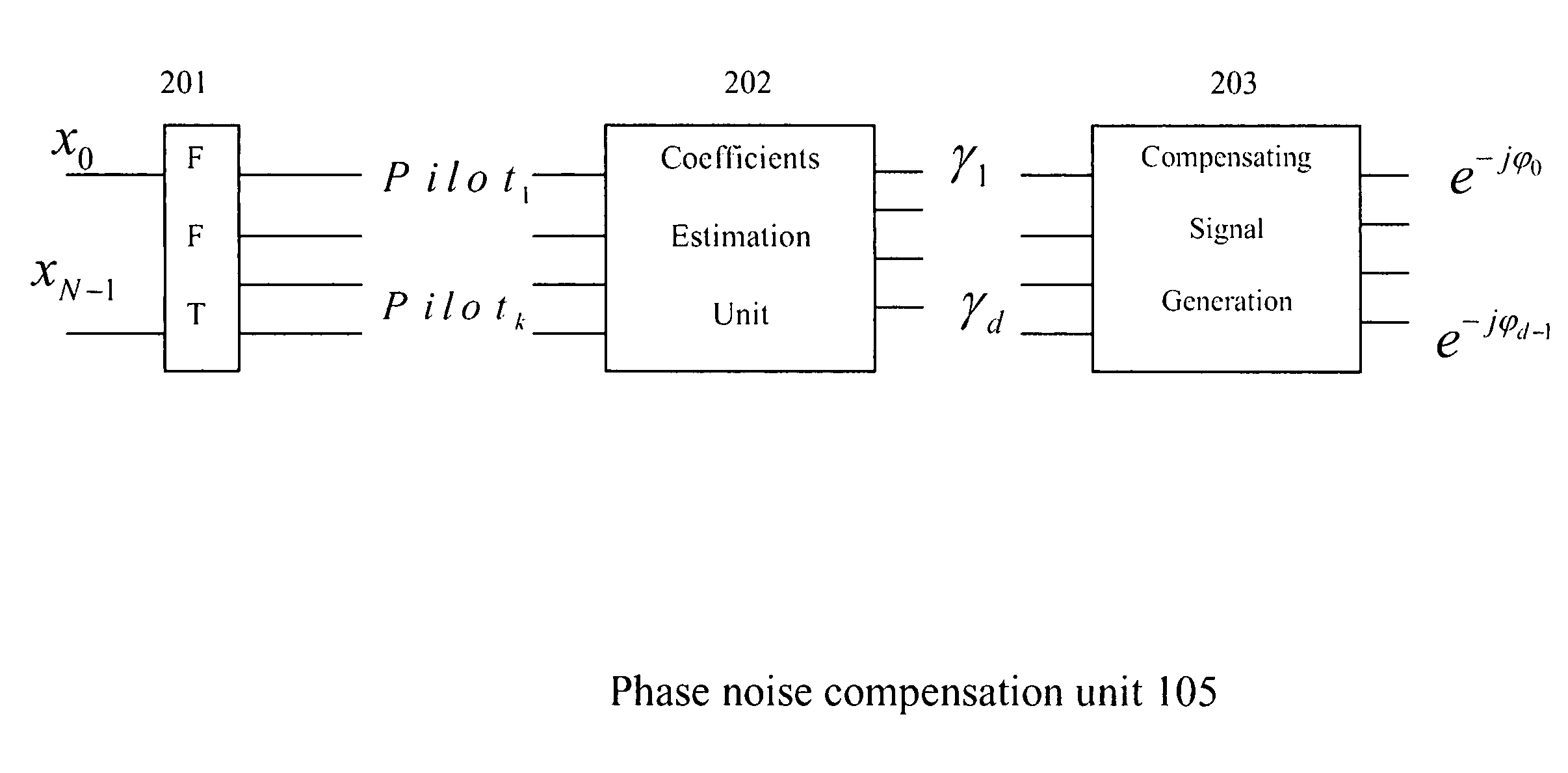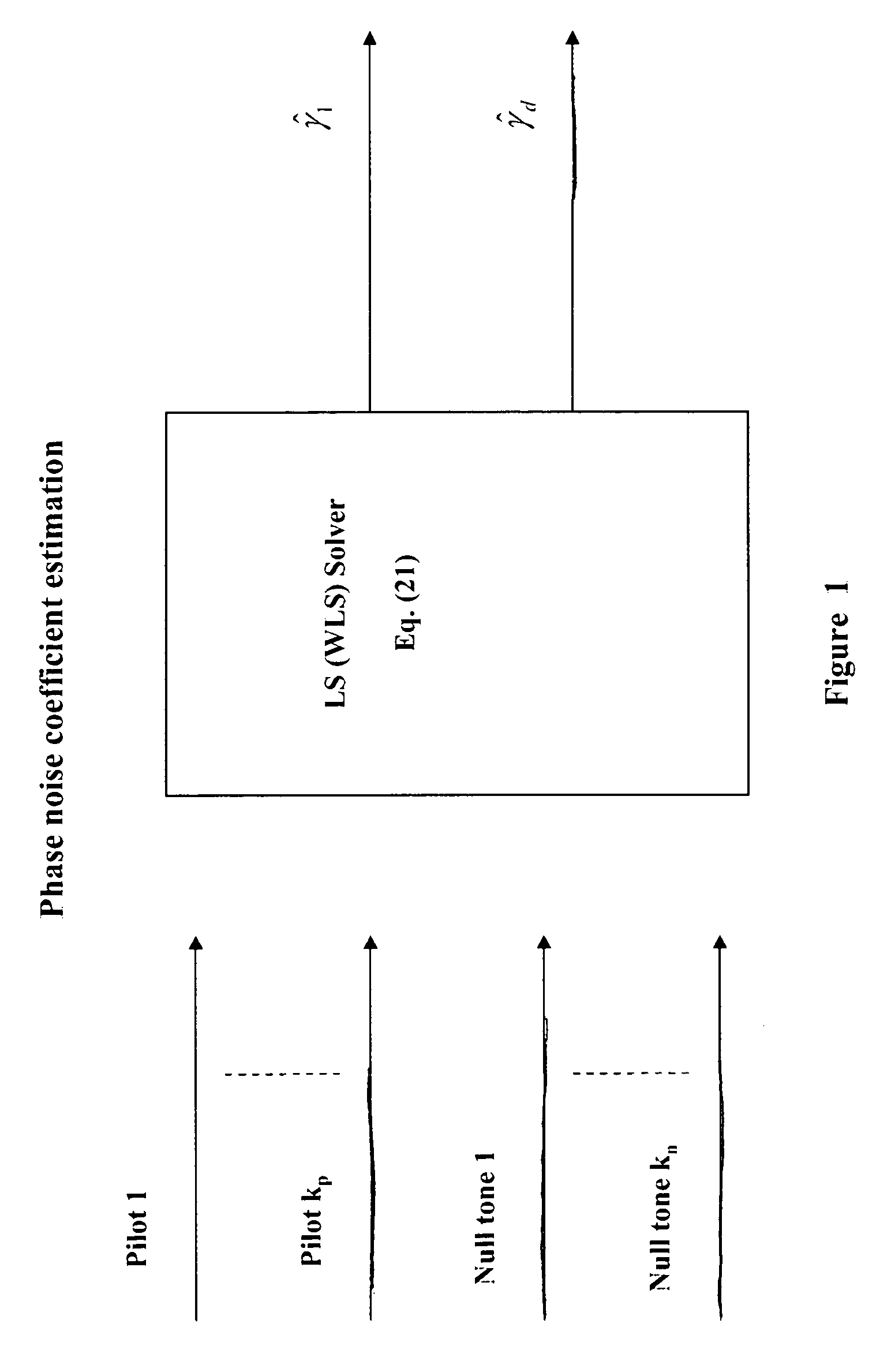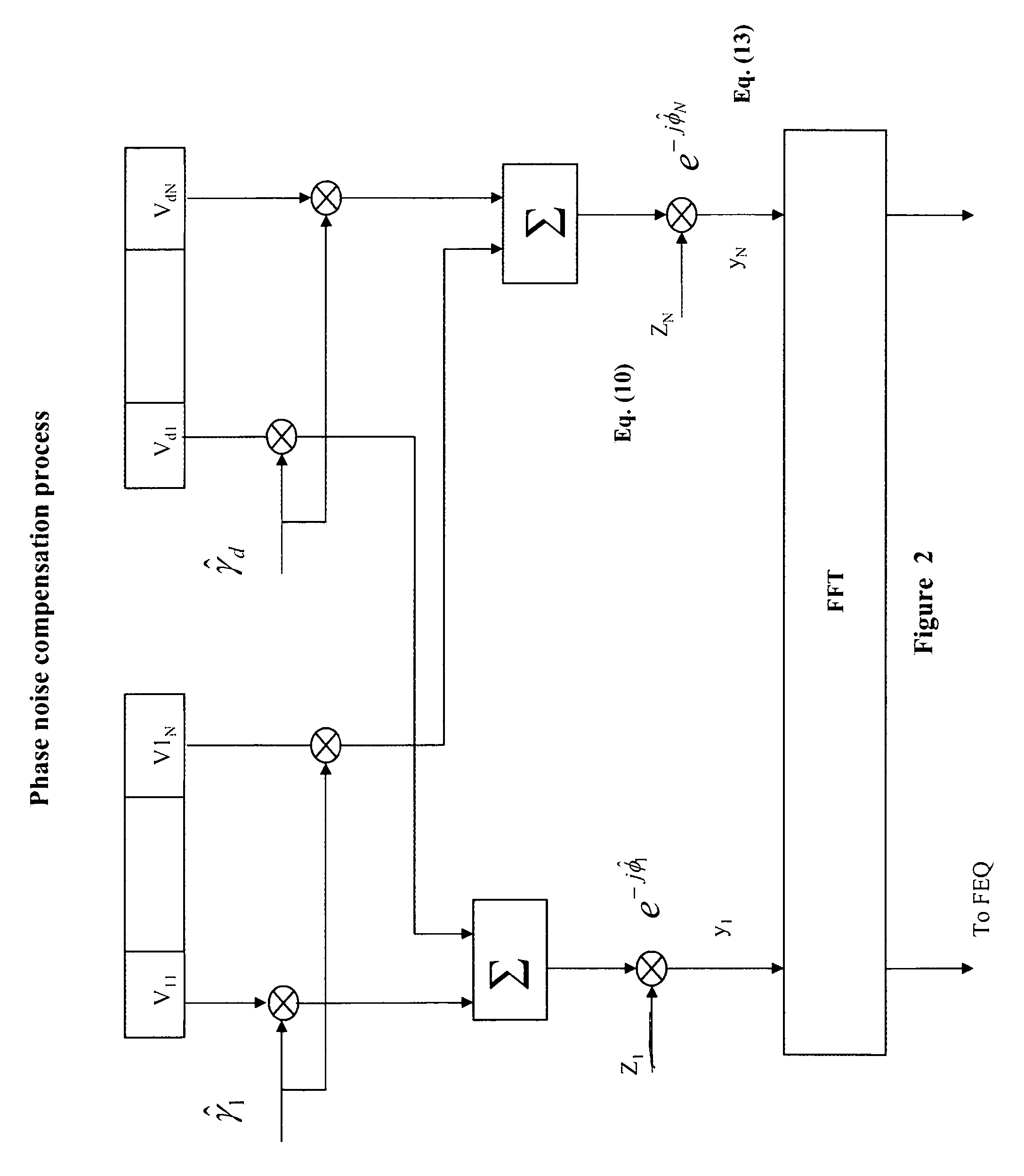Phase noise compensation for MIMO WLAN systems
a phase noise compensation and mimo wlan technology, applied in the field of wireless communication, can solve the problems of inoptimized solution and interference of adjacent tones by the intercarrier, and achieve the effect of reducing the time varying component of phase noise and reducing phase nois
- Summary
- Abstract
- Description
- Claims
- Application Information
AI Technical Summary
Problems solved by technology
Method used
Image
Examples
Embodiment Construction
[0022]One of the main problems of OFDM systems is interference of adjacent tone signals, referred to as inter-carrier interference (ICI).
[0023]One major cause of ICI is phase noise caused by instability of local oscillators. ICI limits the use of the entire available spectrum and therefore is a serious obstacle to increasing the system's performance and data transfer rate.
[0024]The present invention discloses enhancements to the method of Casas, et al for reducing phase noise in OFDM systems. The Casas method is based on representing the phase noise in a fixed basis unrelated to the specific system, namely the transceiver specifications and environmental parameters. The dominant phase noise components are then estimated using LS fitting of several basis vectors. The present invention suggests replacing the fixed representation of the phase noise with a system and time-dependent representation that changes in real time according to received data. The time-dependent representation of ...
PUM
 Login to View More
Login to View More Abstract
Description
Claims
Application Information
 Login to View More
Login to View More - R&D
- Intellectual Property
- Life Sciences
- Materials
- Tech Scout
- Unparalleled Data Quality
- Higher Quality Content
- 60% Fewer Hallucinations
Browse by: Latest US Patents, China's latest patents, Technical Efficacy Thesaurus, Application Domain, Technology Topic, Popular Technical Reports.
© 2025 PatSnap. All rights reserved.Legal|Privacy policy|Modern Slavery Act Transparency Statement|Sitemap|About US| Contact US: help@patsnap.com



